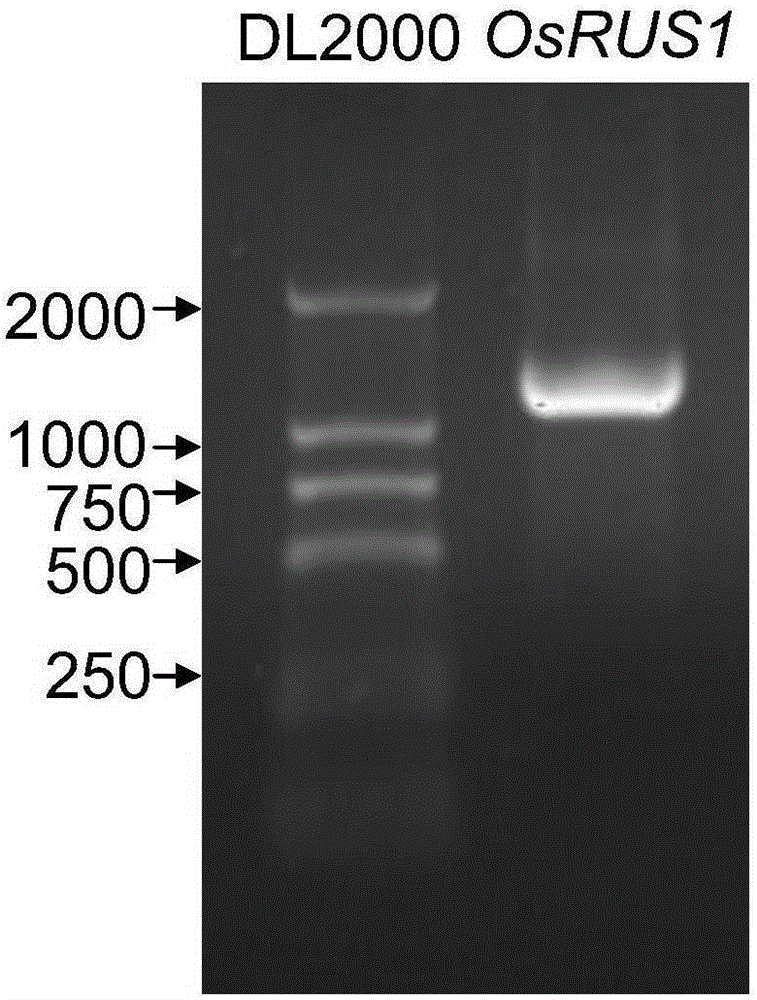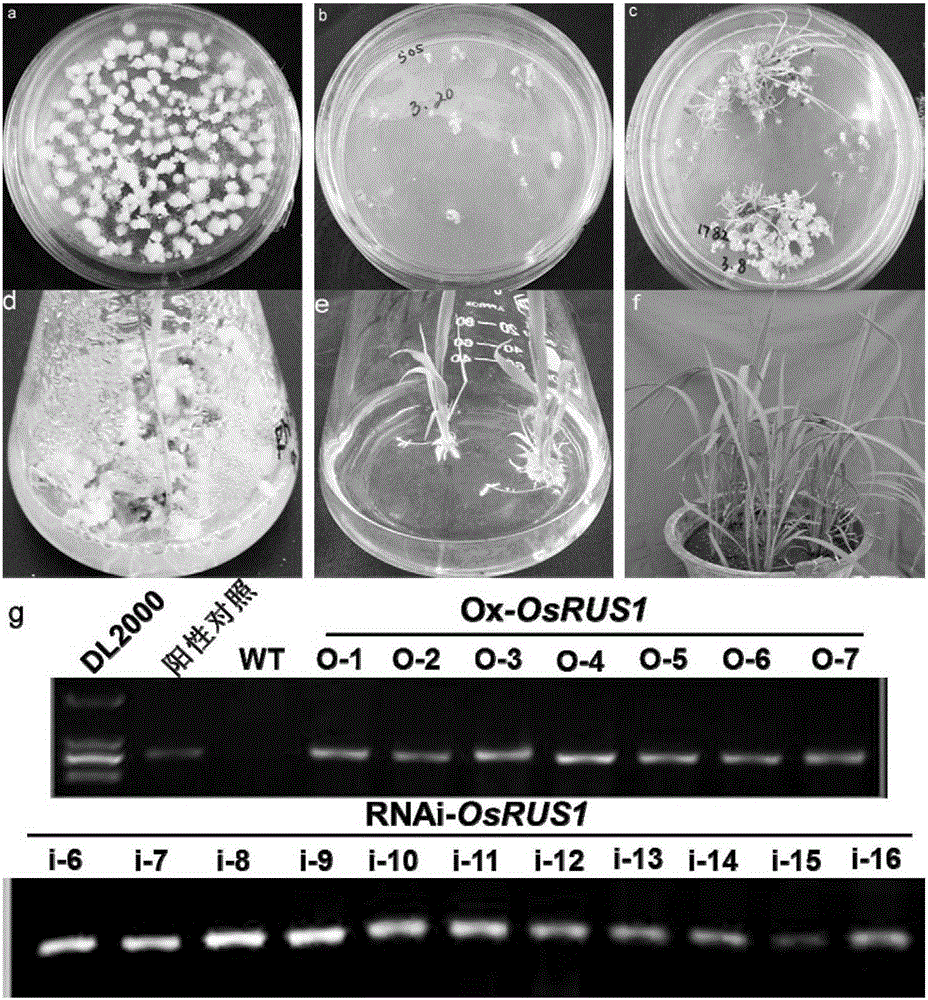OsRUS1 protein and application of encoding genes thereof in control of tiller angle and tiller number of rice
A technology for encoding genes and tiller numbers, which is applied in the fields of application, genetic engineering, and plant gene improvement, and can solve problems such as reduced tiller angles and increased tiller angles of rice plants
- Summary
- Abstract
- Description
- Claims
- Application Information
AI Technical Summary
Problems solved by technology
Method used
Image
Examples
example 1
[0040] 1. Cloning of rice OsRUS1 gene
[0041] Primers were designed according to the cDNA sequence of the OsRUS1 gene provided by the MSU / TIGR rice genome database (http: / / rice.plantbiology.msu.edu / ), OsRUS1ORF-F1: (5'-A GGATCC ATGTCCTCCTCGCAATCTCT-3′, the underline is the restriction site of BamHI) OsRUS1ORF-R1 (5′-G AAGCTT GAAGGAGCATCTCCTATGCG-3′; the underline is the restriction site of HindIII)
[0042] For the extraction of total RNA, the japonica rice variety Zhonghua 11 (or ZH11, a publicly popularized and applied rice variety cultivated by the Institute of Crop Science, Chinese Academy of Agricultural Sciences) was selected. RNA. The extraction reagent used TRIZOL reagent (purchased from Invitrogen Company), and the extraction method was operated according to the instructions of the above-mentioned TRIZOL reagent. Use reverse transcriptase M-MLV (purchased from TaKaRa Company) to synthesize cDNA by reverse transcription, according to the instruction manual of TaK...
Embodiment 2
[0067] The seedlings were cultivated by the soil culture method, and transplanted to the experimental field when the seedlings grew to the 4-leaf stage. Transplanting in three plants, the scale is 4 rows×12 beads, the spacing between plants and rows is 13.5×25cm, and the conventional fertilizer and water management is used. After the seedlings entered the tillering stage, the tiller angle was counted, and after heading, the tiller number was counted. Ear length and seed setting rate were counted in the later stage ( Image 6 ).
[0068] Through the OsRUS1 overexpression vector ( figure 2 A) and RNAi vector ( figure 2 B) construction, using Agrobacterium-mediated transformation of rice embryogenic callus to obtain a large number of transgenic lines ( image 3 ), among the obtained two independent homozygous transgenic lines, the nucleic acid expression levels of the overexpression transgenic lines were respectively increased by 19 times and 17 times compared with the wild...
PUM
 Login to View More
Login to View More Abstract
Description
Claims
Application Information
 Login to View More
Login to View More - R&D
- Intellectual Property
- Life Sciences
- Materials
- Tech Scout
- Unparalleled Data Quality
- Higher Quality Content
- 60% Fewer Hallucinations
Browse by: Latest US Patents, China's latest patents, Technical Efficacy Thesaurus, Application Domain, Technology Topic, Popular Technical Reports.
© 2025 PatSnap. All rights reserved.Legal|Privacy policy|Modern Slavery Act Transparency Statement|Sitemap|About US| Contact US: help@patsnap.com



